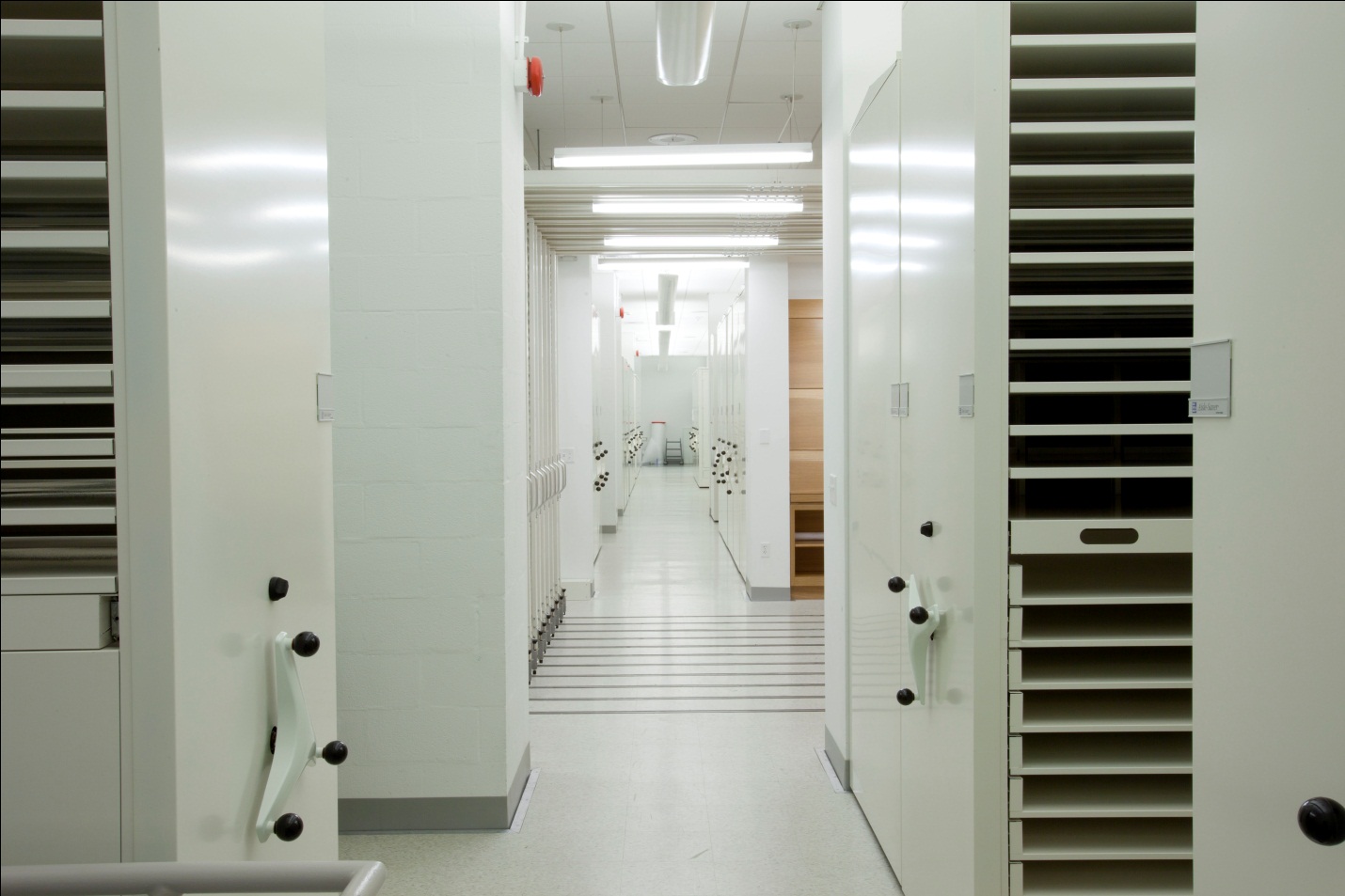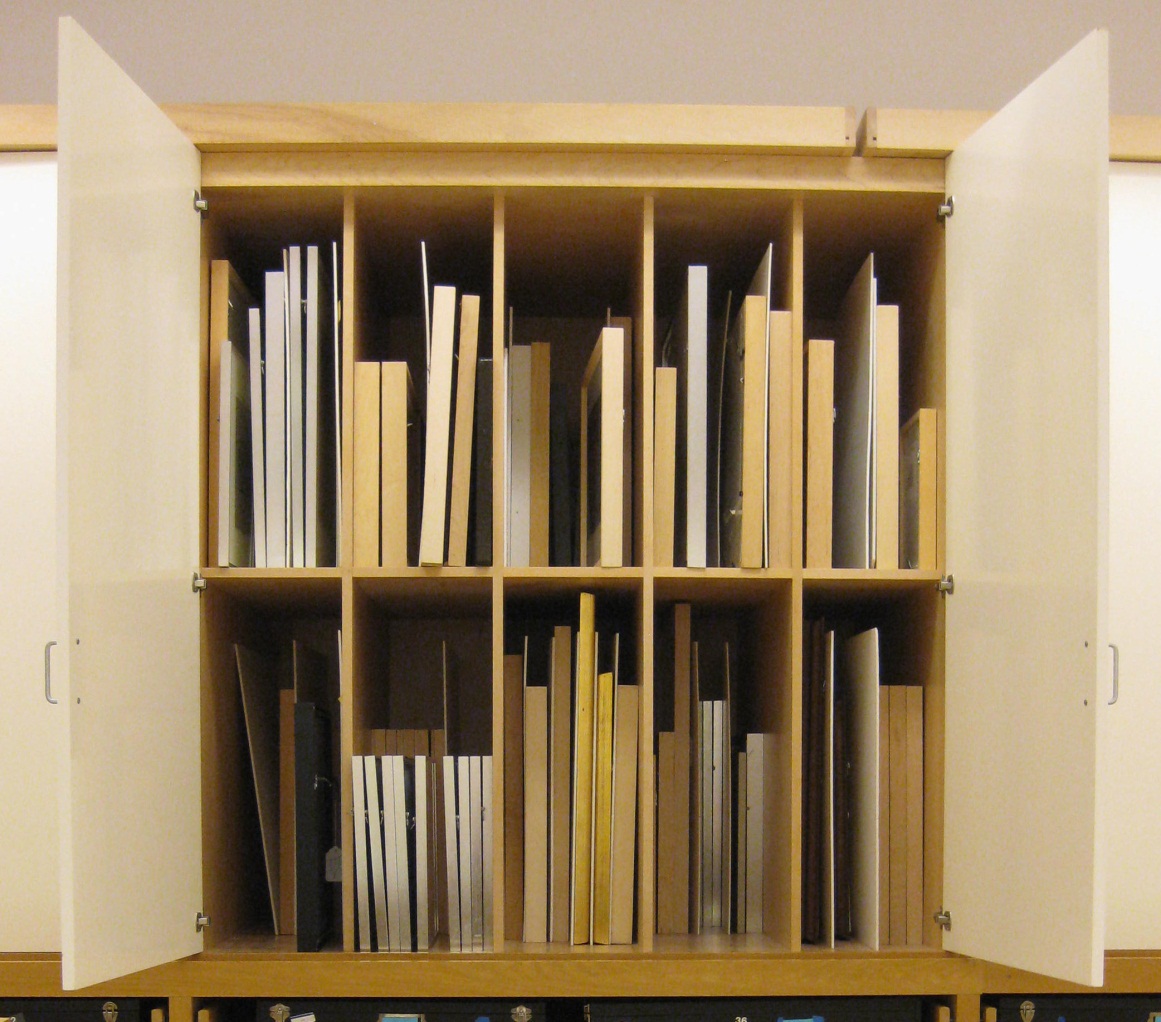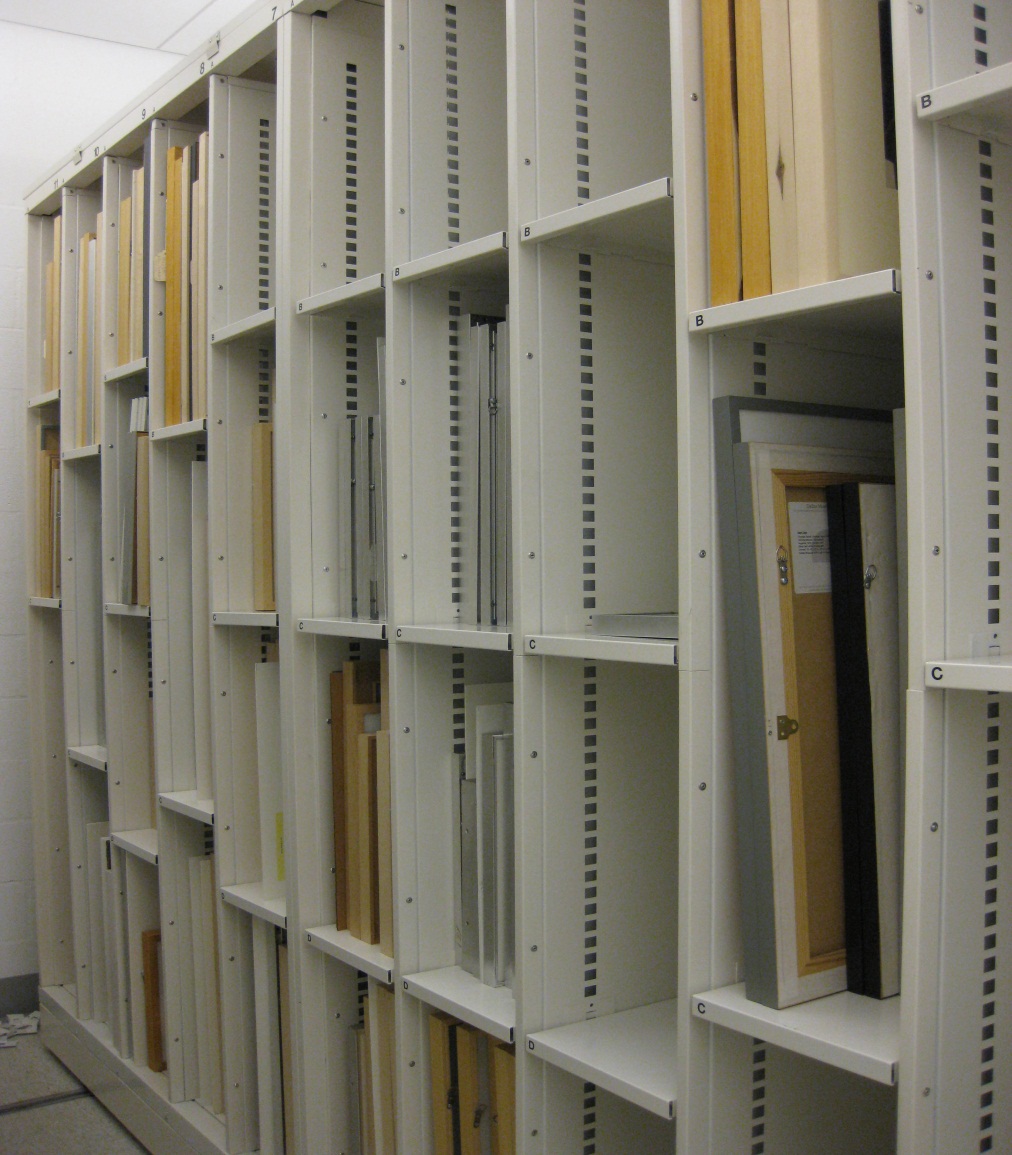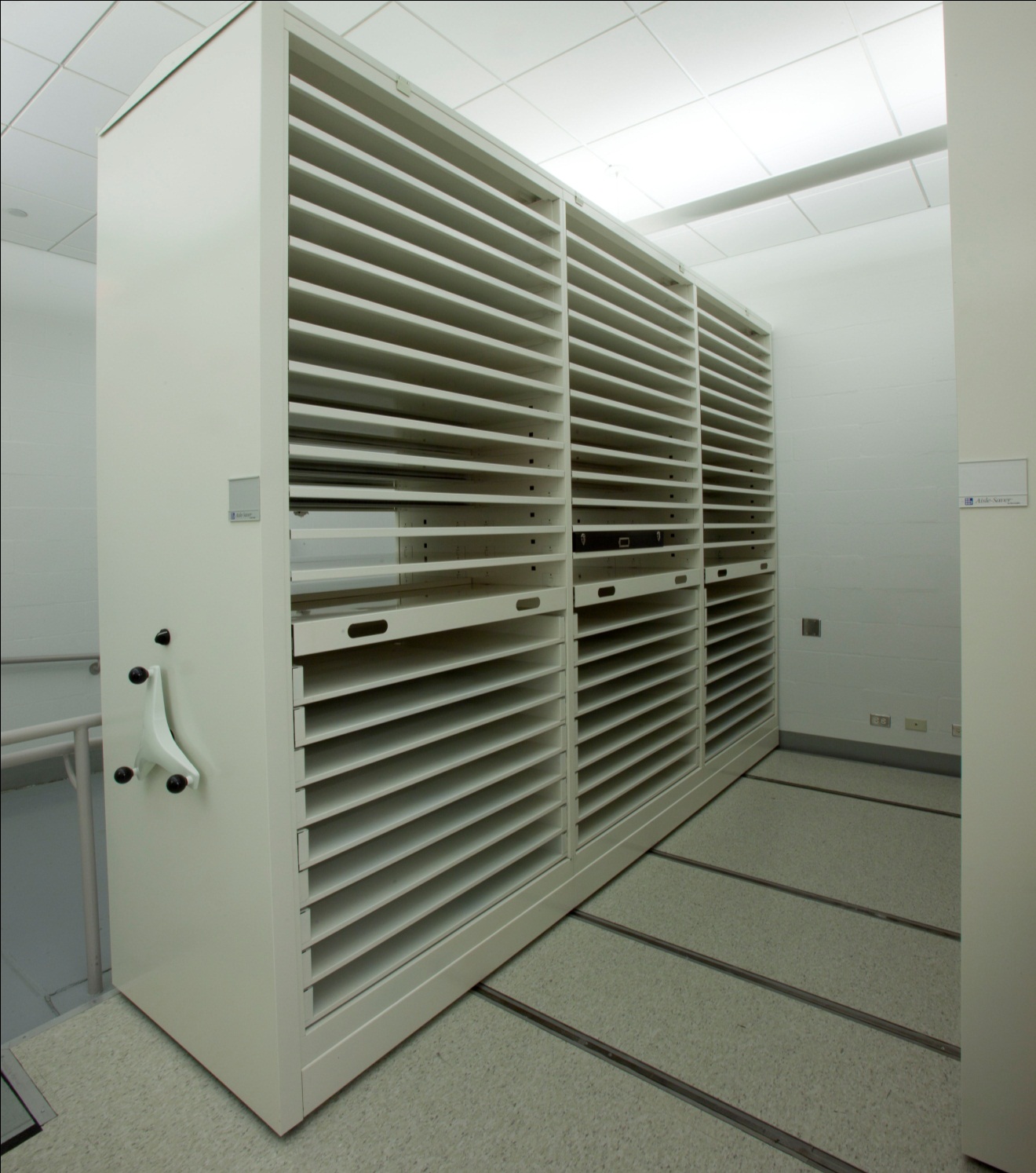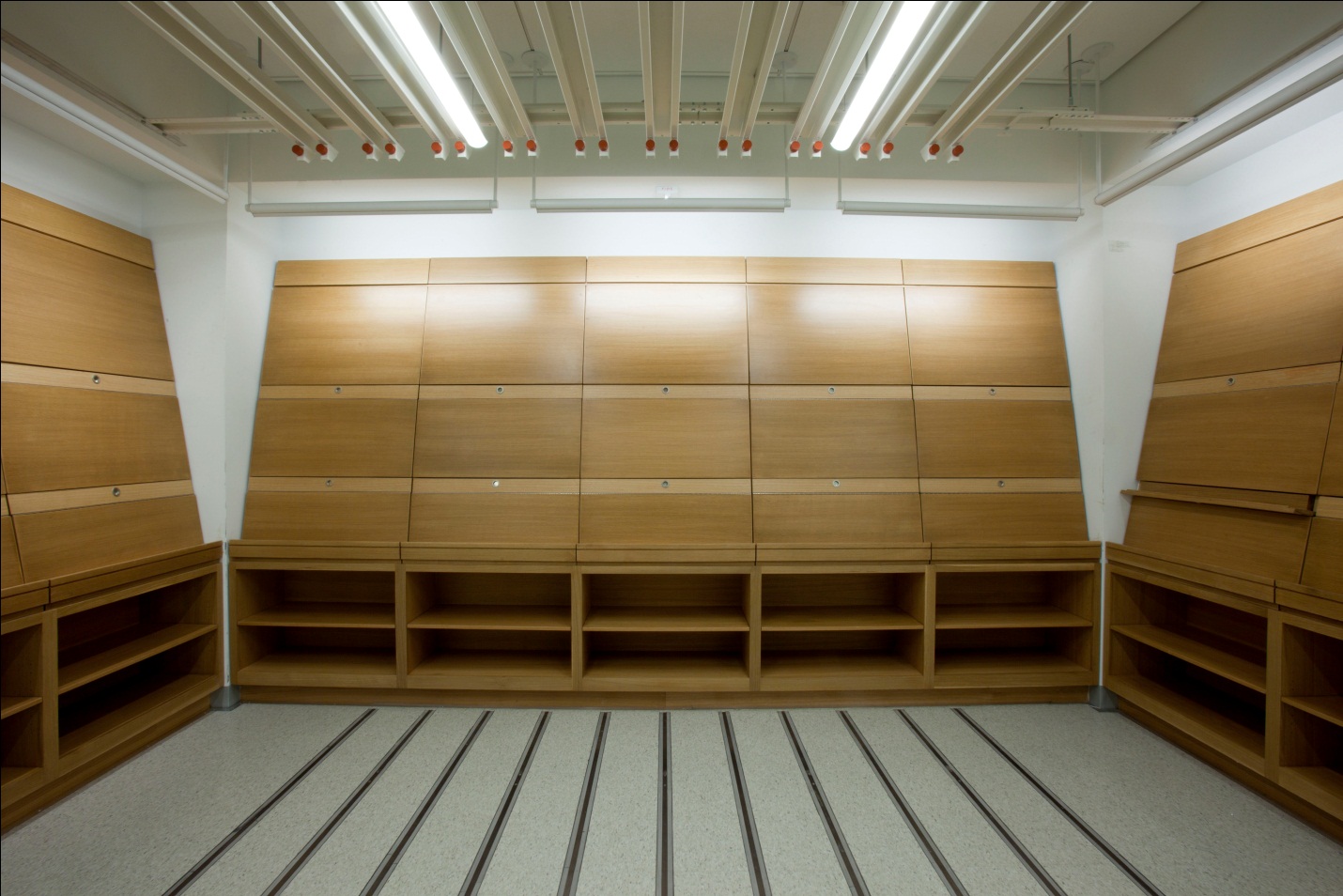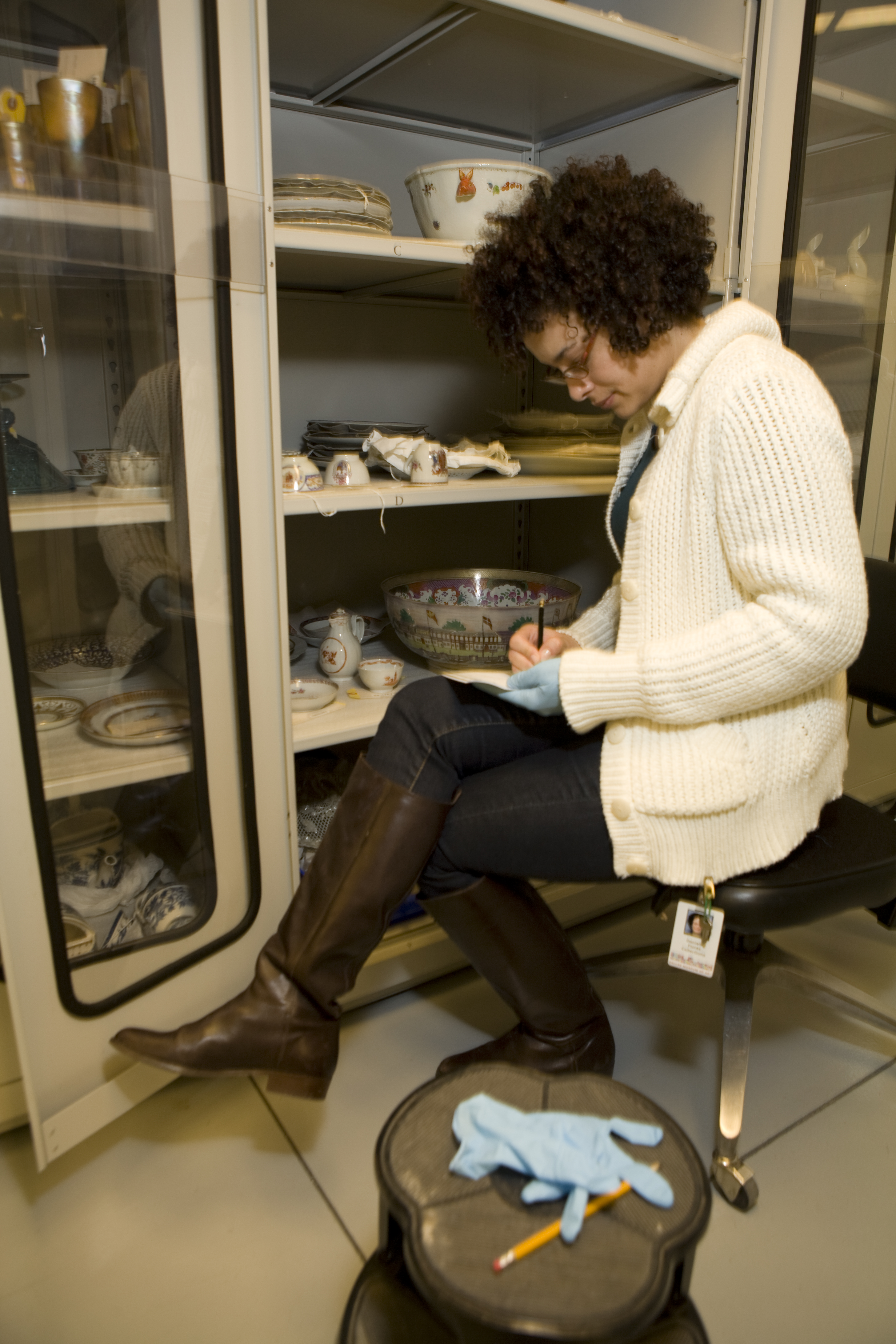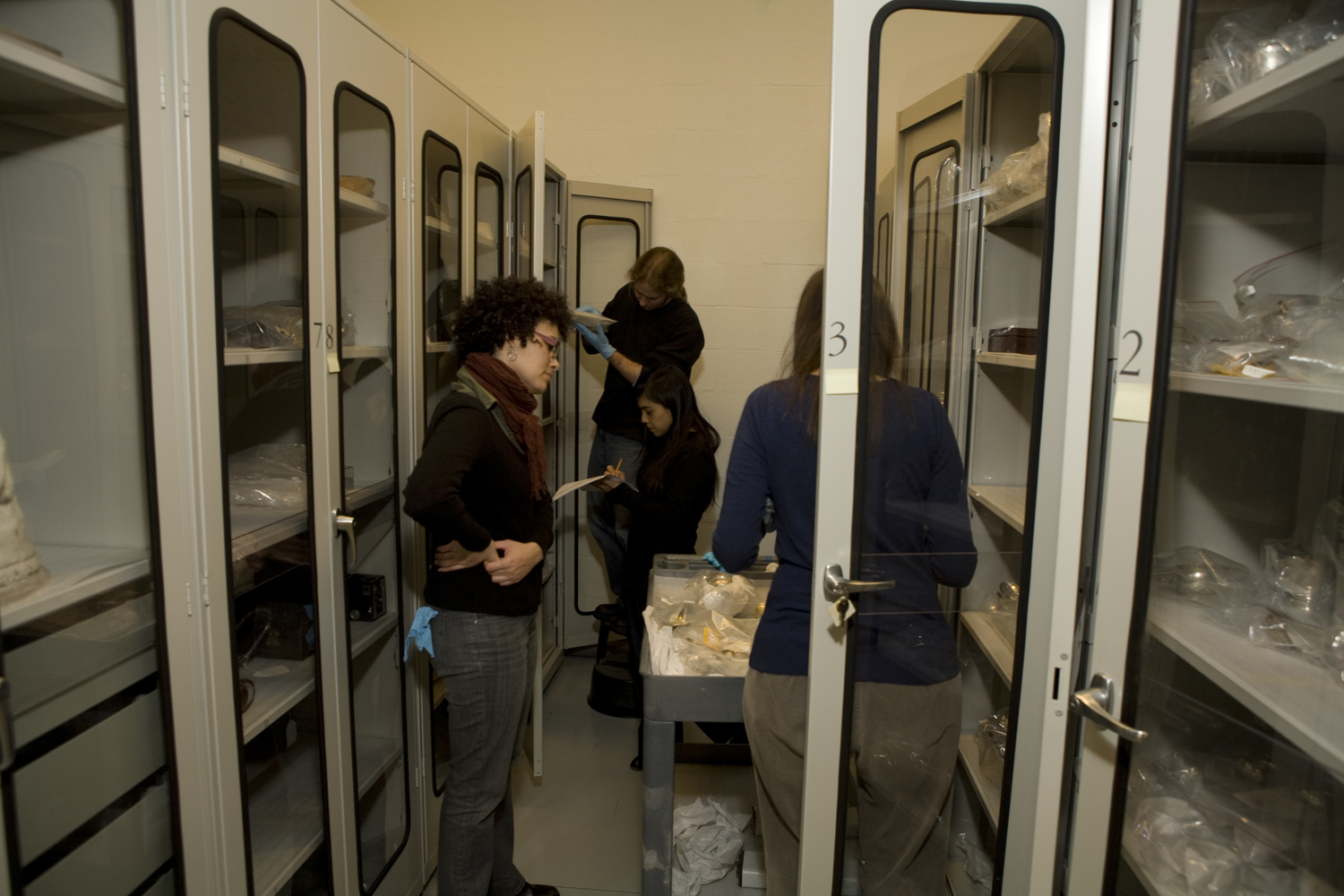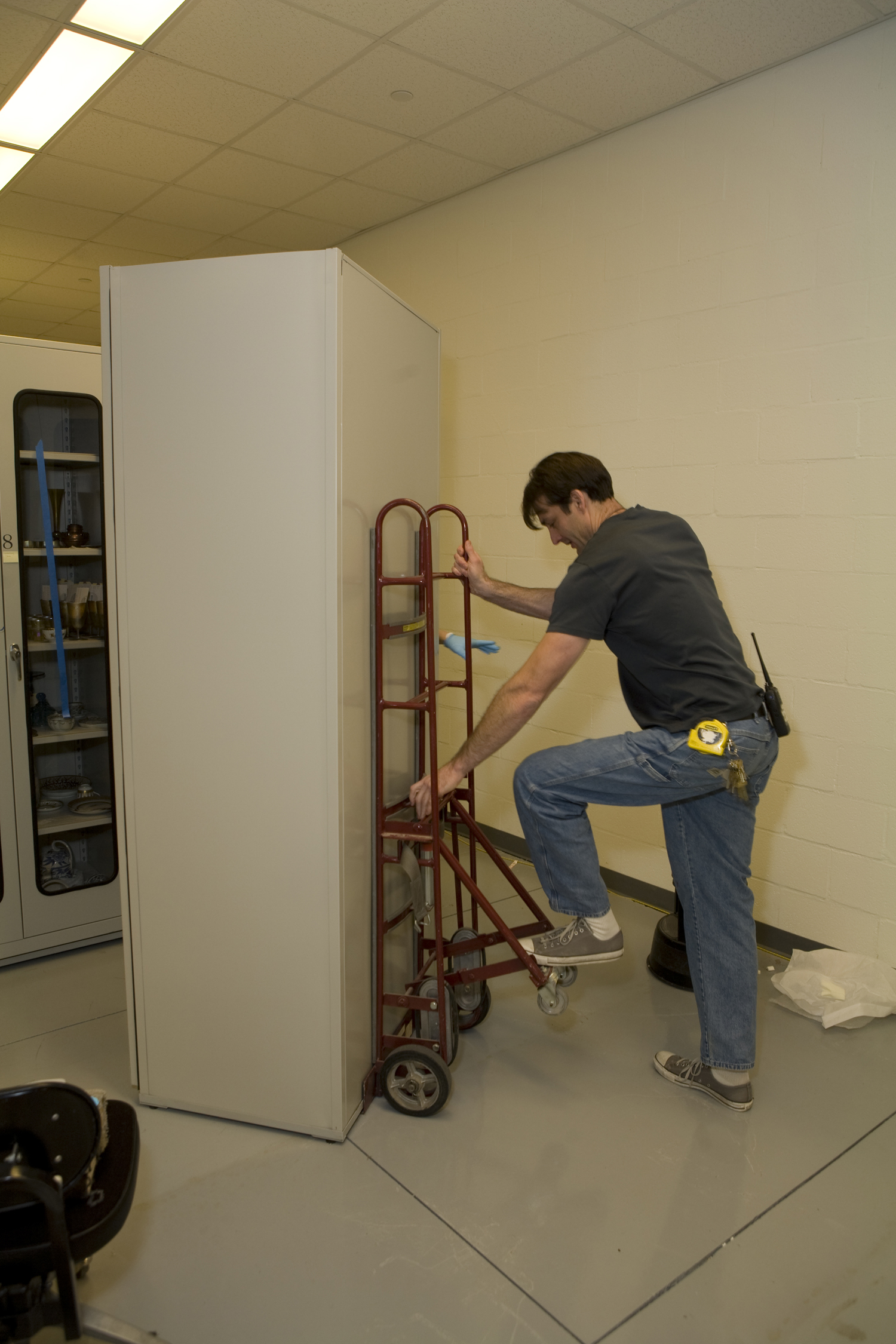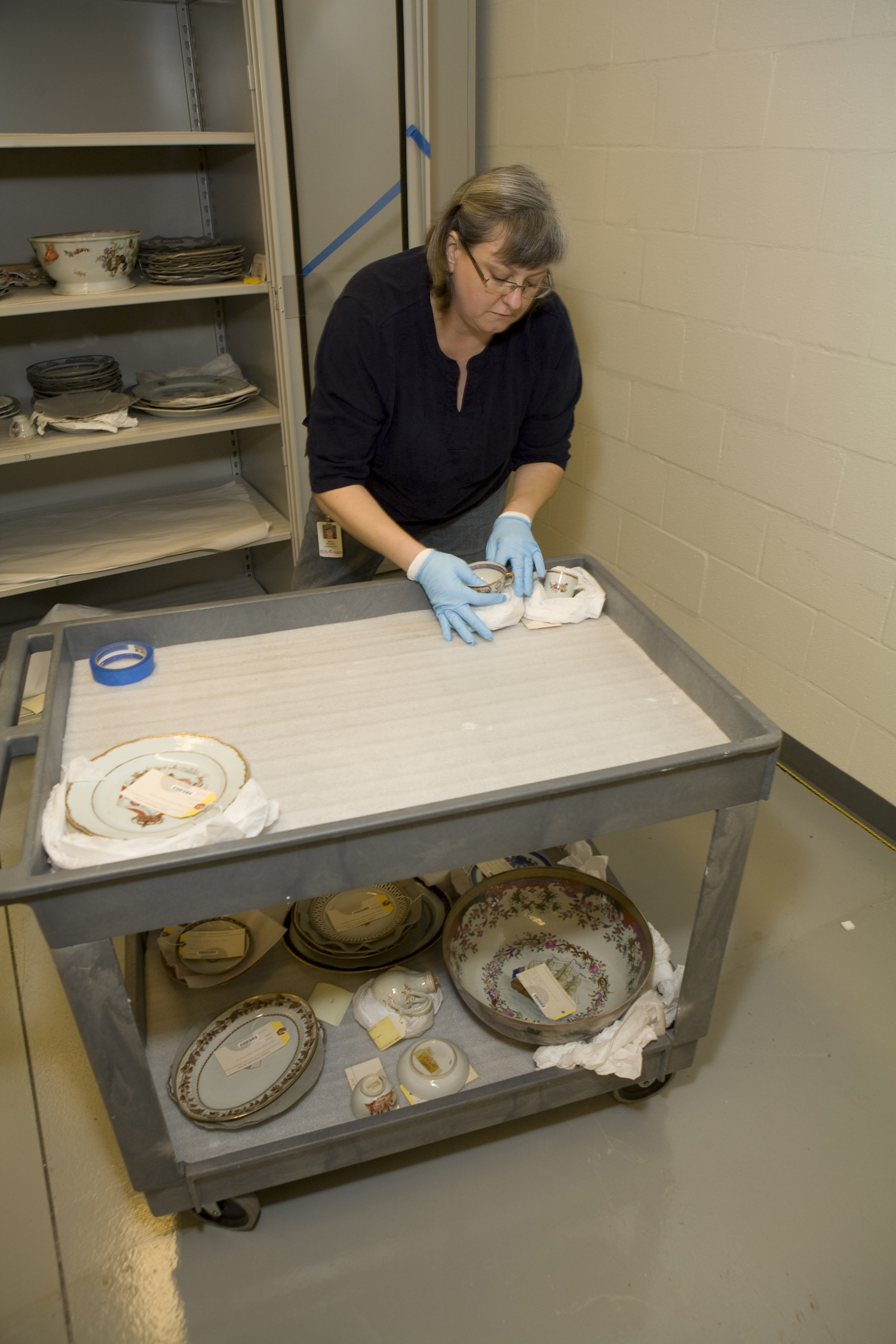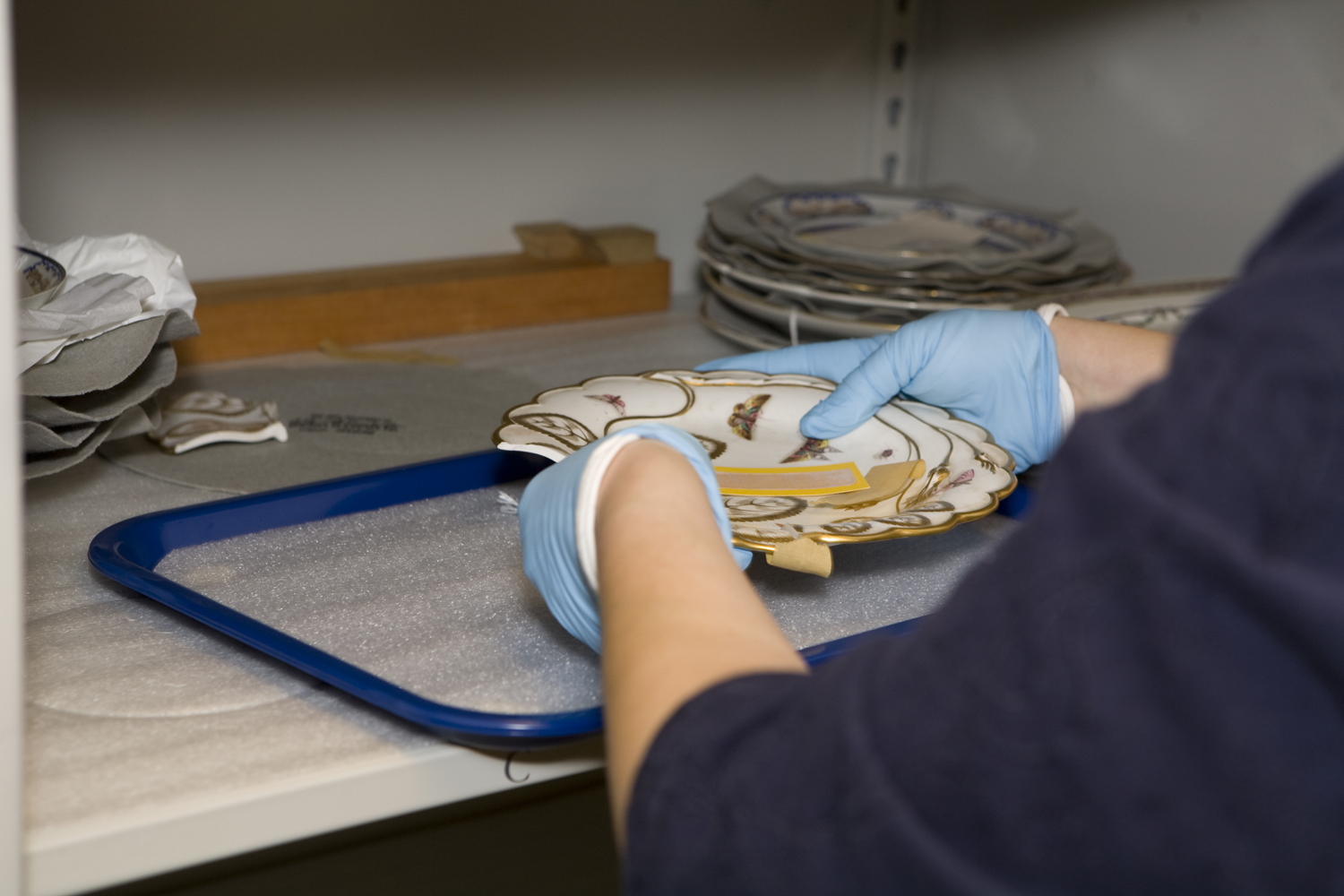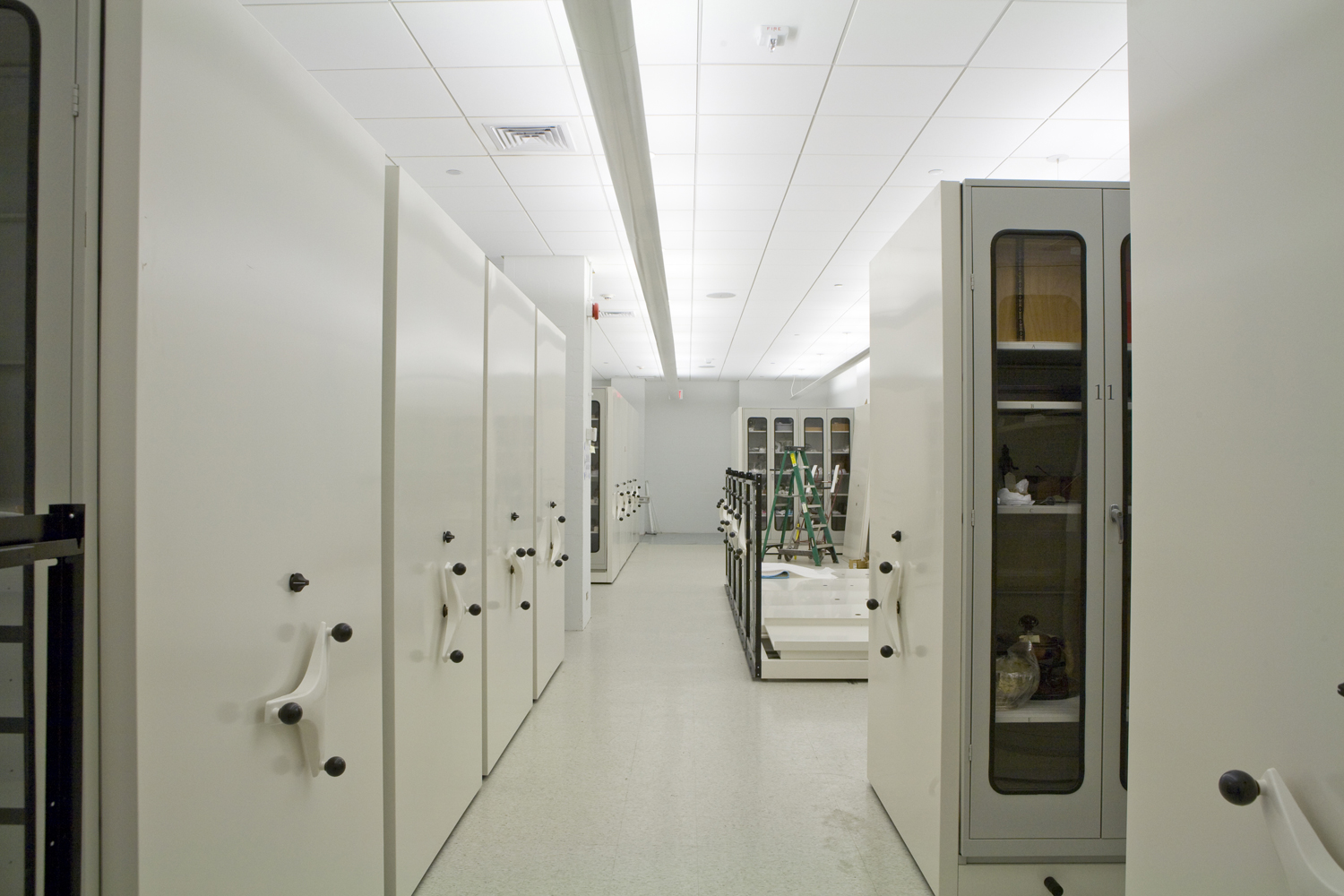Since our art storage area is not available to the general public, we thought we’d give you a behind-the-sceneslook at our new and improved space.
In 2008, the Museum was awarded an important grant from the National Endowment for the Humanities. Through the grant, the DMA has increased the square footage of several art storage spaces, expanded storage capacity, and modernized the spaces with new lighting, HVAC, and furniture fixtures. Each storage space was renovated to the highest preservation and green-building standards in coordination with the architecture firm Solomon & Bauer of Watertown, Ma., the City of Dallas, and contractors.
The building of the new Works on Paper (WOP) facilities was the final building stage of this multi-year project. Three new rooms were constructed within the museum’s existing storage space to specifically hold the museum’s roughly 6,000 works. With the construction complete and the new cabinets installed, we have started the process of moving art from our old storage to the new.
Space was one of the biggest concerns in our previous WOP storage. This was especially true for our storage of framed works, where our cabinets were full the point of overflow. We often needed to remove five or six pieces in order to access the one object we needed. Since the goal is to move the work as little as possible, the “overflow” constituted a threat to the care of our objects.
Speaking in strictly numbers, we previously had 18 cabinets with a total of 126 bins, each bin being 10 inches wide and 42 inches deep. As you can see in the picture below, the height of each bin was set. While this created an aesthetically pleasing consistency, it left significant gaps and wasted precious space.
In our new space, conversely, we have 142 bins, each 11 inch wide by 42 inches deep. Not only do we have a greater number of overall bins, our new cabinets are completely modular. Depending upon the need of the collection, we can add or subtract shelves. The photo below shows the new cabinets in process of being loaded with objects. Already you can see the increased functionality of this style unit.
The new framed work storage units are attached to rolling racks, which allows us to maximize our space by removing the need for aisles. While the use of rolling racks has been relatively common in library stacks for years, it is only now becoming the standard in collections care. With the addition of the rolling racks in the area, we have now updated all of our storage spaces to these compacting racks. The photo below shows the new flat storage units on a rolling rack.
Always a problem in our old space, we specifically designed an area of the new storage space to view works on paper. Shelves built in to the slanted wooden backing fold out to support objects without having to bother with hanging. The shelves are large enough to support almost any framed work in the collection, but are also designed in such a way where many smaller pieces could also be shown all at once. The flexibility of the unit is vital to curators as they arrange and rearrange objects in preparation for gallery installations. The overall size of the viewing space is an extra plus as we can now accommodate more students or scholars visiting on research trips.
The changes in how we store our works on paper will greatly improve the overall level of care we are able to maintain. Thanks to the NEH and the Hoblitzelle Foundation, these improvements, along with the updates to our library and archives, the collections file storage space, and small objects—shown in last fall’s Small Objects Collection is Movin’ on Up!—have made a profound impact on the way the collections staff cares for our museum’s collection.
Anne Lenhart is an Assistant Registrar at the Dallas Museum of Art
